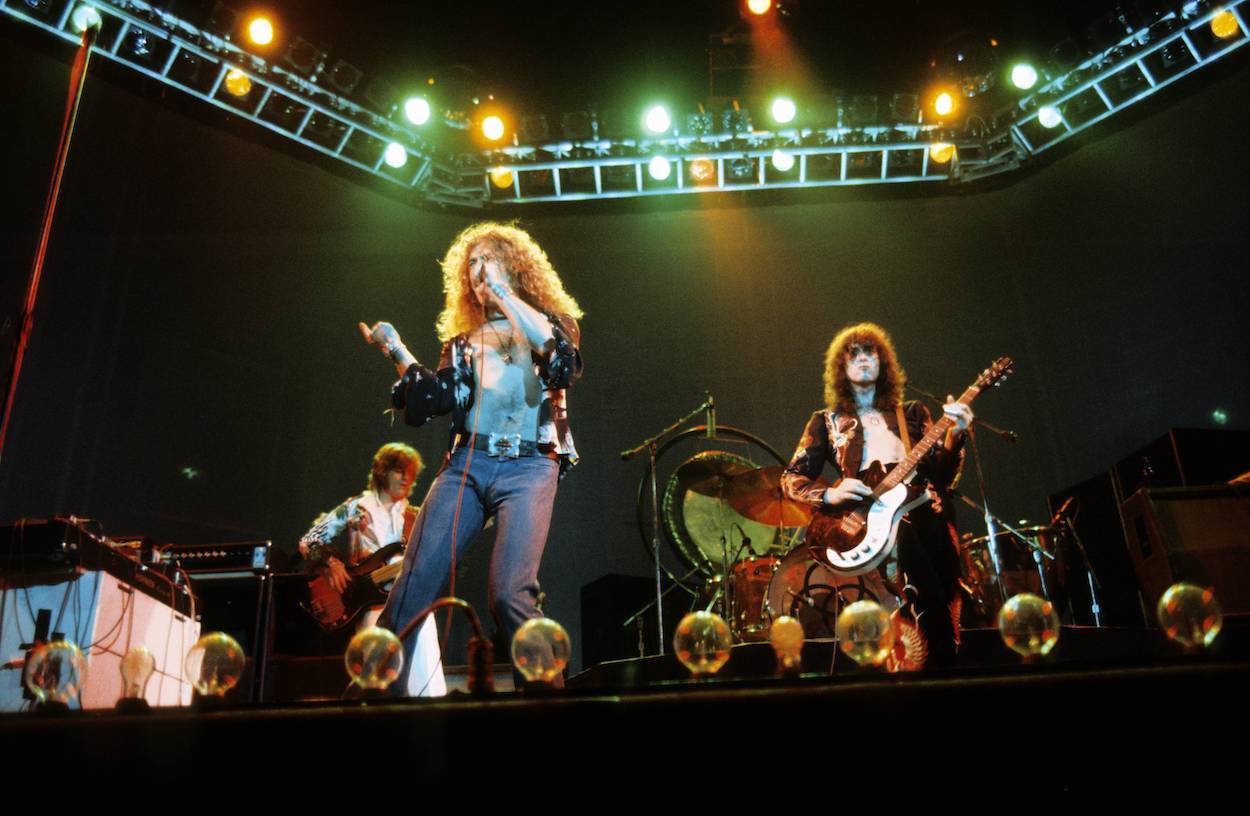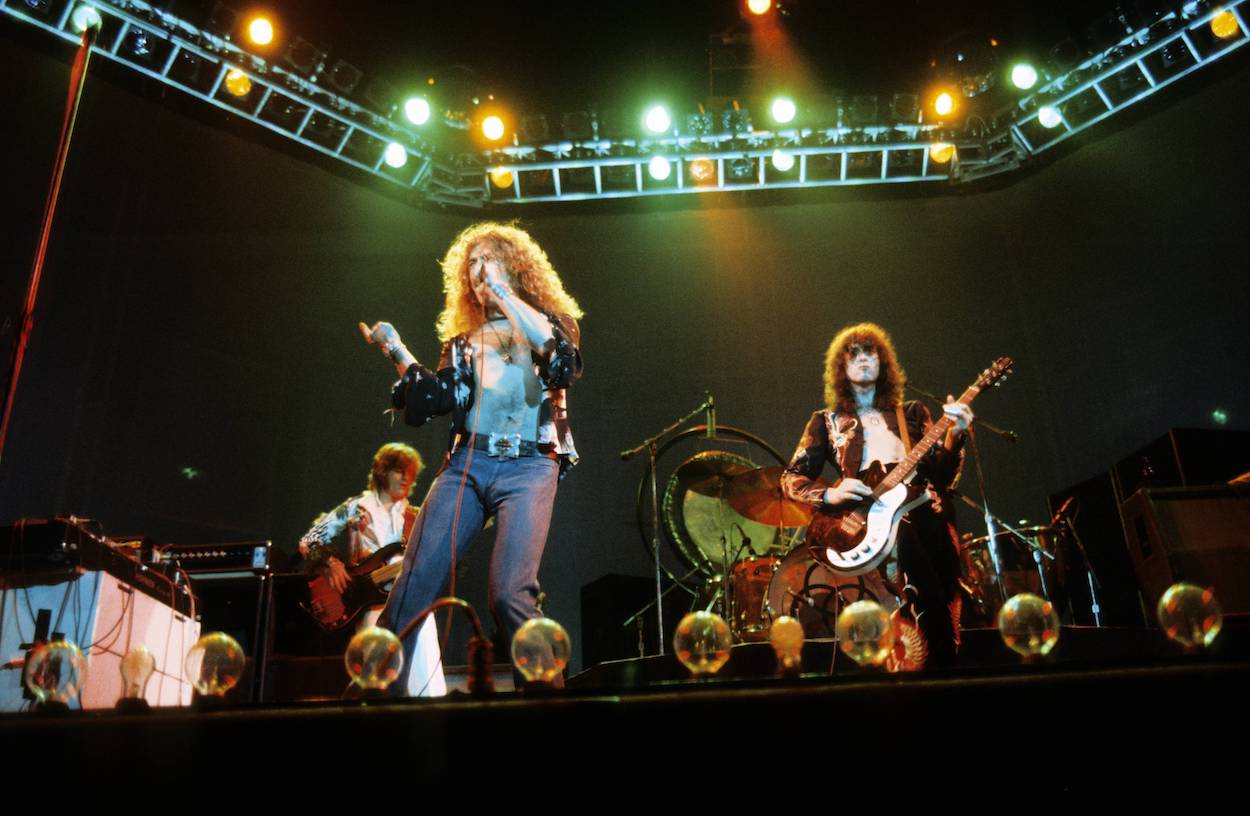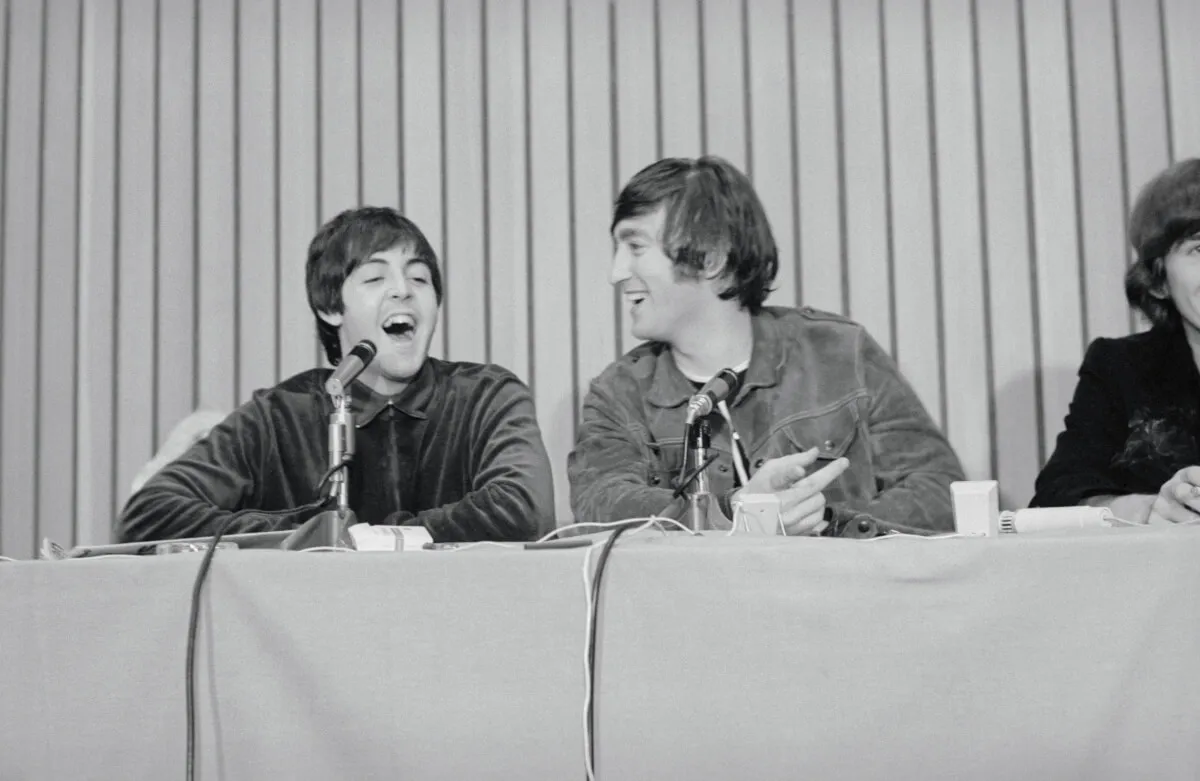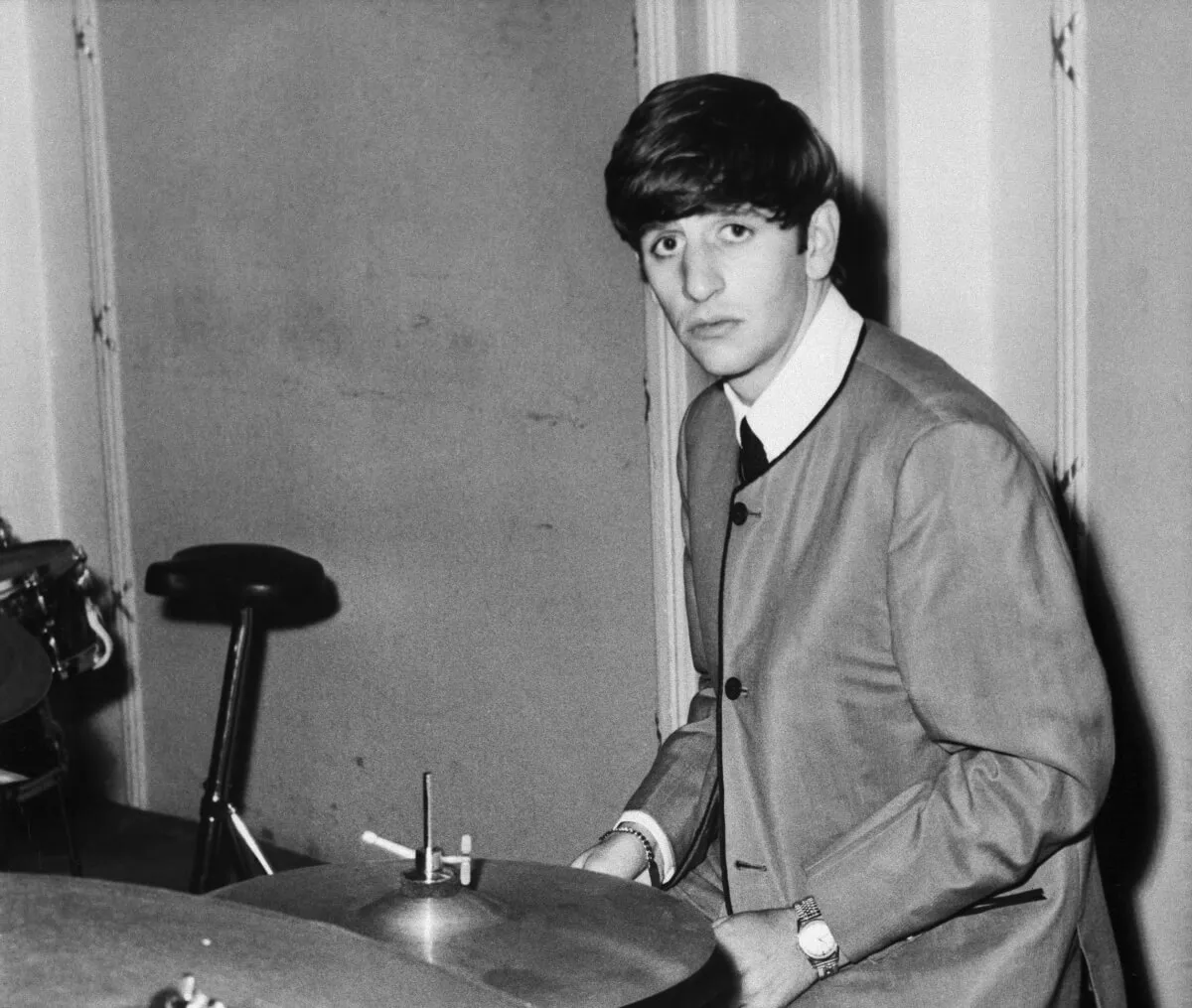
7 Underrated Led Zeppelin Songs From Deep in the Band’s Catalog
Led Zeppelin came together when Jimmy Page pieced the legendary band together after his previous group, the Yardbirds, fell apart. It rose to become one of the titans of rock music. Page, who has always been drawn to heavy music, practically helped invent hard rock. They earned a $2 million paycheck for one signature song and penned several legendary tracks. These seven underrated Led Zeppelin songs prove the band’s excellent deep cuts came throughout their career (presented in chronological order by album).

1. ‘That’s the Way’ from ‘Led Zeppelin III’
Singer Robert Plant turns in a surprisingly delicate vocal performance on a song that rivals any of his story-like lyrical turns. Page displays his studio genius here, too. A gentle slide guitar hovers in the right speaker for most of the song while acoustic guitars and mandolins stay to the left.
Coming deep on the second side of Zeppelin’s “acoustic album,” which confused fans and critics, it’s notable not only for its delicate approach but also for being one of the few times Page played bass on a Zep album.
2. ‘In the Light’ from ‘Physical Graffiti’
Vinyl listeners had to work to get to this song from Led Zeppelin’s sixth album. After “Kashmir” closes side two, “In the Light” brings back some Middle Eastern-sounding sonic elements courtesy of John Paul Jones’ synthesizer at the start of side three.
It also features some genius-level guitar work by Jimmy Page, even though he doesn’t get flashy with his fretwork.
The first two descending riffs sound dark and menacing; the brilliance of Page is that he incorporates many of the same notes for an ascending third riff that is bright and hopeful. It’s an underrated Led Zeppelin song and one that showcases the band at its most ambitious.
3. ‘Boogie With Stu’ from ‘Physical Graffiti’
This track deep on side four of Physical Graffiti dates from the Led Zeppelin IV sessions. Several standout tracks come earlier on the album, but this one is underrated because of how well it pieces together a sampling of Zep’s biggest genre influences. The song has a blues riff with a rockabilly piano line and a folk-inspired solo on top of an experimental drum beat. Only Page’s love for Indian and avant-garde music is missing, but incorporating those here would have been a challenge.
4. ‘Candy Store Rock’ from ‘Presence’
We always knew they could do blues. For anyone who wondered if Zep could pull off something approaching rockabilly, “Candy Store Rock” proves they could.
Page plays a clean riff (as opposed to his sloppier take on rockabilly on In Through the Out Door’s “Hot Dog”) that lends authenticity to the song. Plant throws in several Elvis-like “Oh baby baby” lines, and drummer John Bonham plays a deceptively simple beat. “Candy Store Rock” stands above “The Crunge” as a genre exercise and remains an underrated Led Zeppelin track.
5. ‘Tea for One’ from ‘Presence’
Zeppelin pulls a fast one on Presence’s final song and simultaneously takes listeners back in time. Page plays a relatively upbeat opening riff; 20 seconds later, “Tea for One” flashes back to “Since I’ve Been Loving You” from Led Zeppelin III with its slow, primal blues.
On an album filled with emotionally raw material (Plant called out Page and Zep’s manager on one song), “Tea for One” might be the rawest. The underrated Led Zeppelin song has some of the Plant’s most depressing lyrics — singing of love abandoned only to spend the days obsessing over it — complemented by Page’s understated guitar work.
6. ‘In the Evening’ from ‘In Through the Out Door’
On an album that Jones and Plant took control of, this song is one that Page dominates. It showcases many elements of the guitar style he demonstrated over Zeppelin’s previous 10 years.
Page revisits his violin bow sound effects (courtesy of a Gizmotron) with darkly atmospheric drones at the start. Then he plays a fairly straightforward blues-based riff that sits nicely next to Jones’ synthesizer before launching a sturdy solo that might be Page’s last fine moment with Led Zeppelin.
7. ‘Wearing and Tearing’ from ‘Coda’
The track from 1978 didn’t see the light of day until Page made it the closing track on Coda. With its energy and sonic assault, “Wearing and Tearing” sounds like something from deeper in the band’s vault.
Bonham’s rapid-fire bass drum almost bursts through the speakers, and Page plays perhaps his most straightforward riff as the band seems to fire back at the first wave of punk bands coming for Led Zeppelin’s crown. It’s one of Led Zeppelin’s underrated songs and a glimpse of what could have been if the band continued into the 1980s.
For more on the entertainment world and exclusive interviews, subscribe to Showbiz Cheat Sheet’s YouTube channel.


